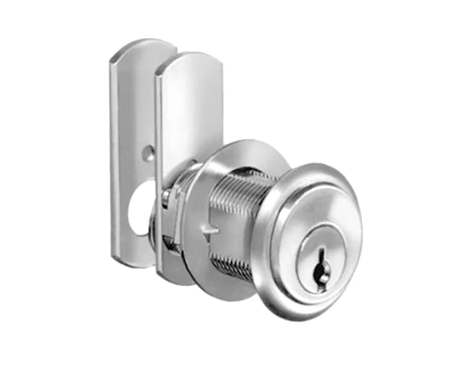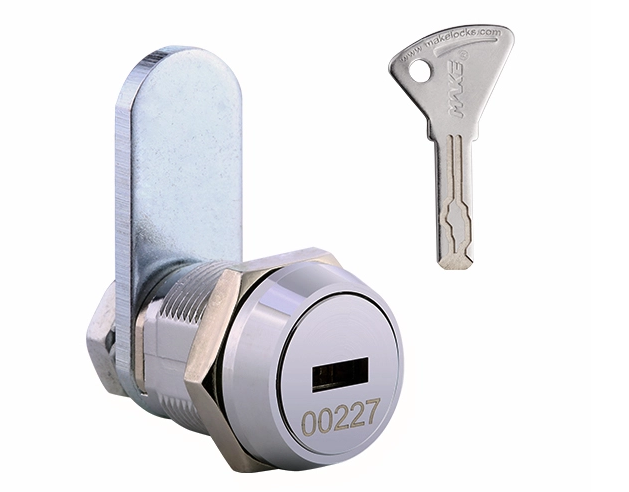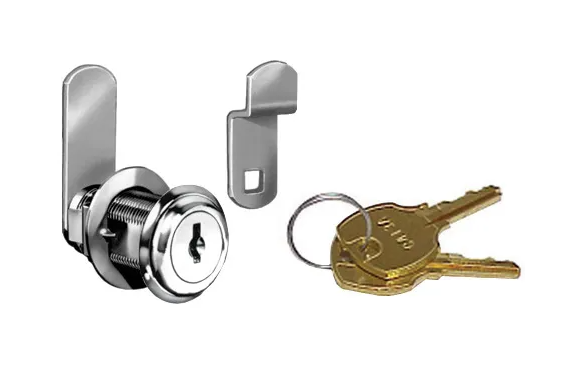Cam locks are essential hardware components widely used in securing doors, drawers, cabinets, and access panels across various industries. These compact yet powerful mechanisms offer a reliable and cost-effective way to restrict access to equipment, tools, or confidential materials. Though small in size, cam locks play a vital role in everyday security, whether in offices, industrial equipment, vending machines, or mailboxes.
While they might appear simple at first glance, cam locks come in different designs and materials tailored for specific applications. This guide will explore the primary types of tumbler-style cam locks, their mechanical differences, key characteristics, and factors to consider when selecting the right cam lock for your project.
There are three primary styles of tumbler cam locks: pin tumbler cam lock, wafer tumbler cam lock, and disc tumbler cam lock. Each of these types features a unique locking mechanism and serves different use cases depending on security level, environment, and budget.
The pin tumbler is the original and most recognizable cam lock design. It works based on a series of spring-loaded pins of varying lengths that align only when the correct key is inserted.

How It Works:
Inside the lock cylinder, two sets of pins (driver pins and key pins) are stacked in vertical chambers. When no key is present, the pins are misaligned, preventing the plug from rotating. When the correct key is inserted, the pins are pushed into precise positions so that the shear line (the gap between the plug and the housing) becomes clear, allowing the plug to rotate and unlock the mechanism.
Applications:
File cabinets
Storage lockers
Tool chests
Cash boxes
Advantages:
High level of security
Wide key variation
Durable and time-tested design
Pin tumbler cam locks are ideal for environments that require moderate to high security and are widely used in both residential and commercial settings.
Wafer tumbler locks operate on a similar principle as pin tumblers but use flat, spring-loaded wafers instead of cylindrical pins. These wafers block the plug from turning unless the correct key aligns them to a neutral position.

How It Works:
Each wafer is notched to match the key pattern. When the correct key is inserted, the wafers align with the cylinder, allowing it to turn. When the wrong key is used or no key is inserted, the wafers extend into the plug’s path, preventing rotation.
Applications:
Industrial cabinets
Office furniture
Utility panels
Light-duty enclosures
Advantages:
Cost-effective to manufacture
Simple and compact design
Quick to install and replace
While wafer tumbler cam locks provide basic security, they are best suited for applications where deterrence is sufficient and high-security isn't a critical requirement.
Often confused with wafer locks, disc tumbler locks (also known as rotary disc locks) feature a more advanced mechanism without springs, making them suitable for outdoor or harsh environments.

How It Works:
The lock contains a series of slotted, rotating discs instead of pins or wafers. When the correct key is inserted, it rotates each disc into a specific alignment where all the slots line up. This allows a sidebar to drop into place, freeing the plug to rotate and unlock the lock.
Applications:
Outdoor enclosures
Vending machines
Utility meters
ATMs and kiosks
Advantages:
Highly resistant to dirt, corrosion, and extreme temperatures
Increased pick resistance
Long service life in rugged environments
Disc tumbler cam locks are the go-to solution for users who need weatherproof, durable security with higher resistance to tampering.
The terms cam lock and cam latch are often used interchangeably, which can create confusion. While both serve to secure doors, panels, and access points, there are subtle differences in terminology and function.
A cam lock specifically refers to a latch that uses a locking mechanism, typically requiring a key or tool to operate.
A cam latch, more broadly, includes any device that secures an enclosure by rotating a cam—regardless of whether it requires a key.
In reality, a cam lock is a type of cam latch—more specifically, a lockable version. For example, quarter-turn latches fall under the cam latch category. These devices rotate 90 degrees to lock or unlock and often use a handle or tool rather than a key.
Whether you're securing a metal cabinet, HVAC access door, or industrial panel, both cam locks and cam latches offer a compact, affordable locking solution. The choice between the two usually depends on whether key access is necessary.
When selecting a cam lock, it’s important to understand the different materials and configurations available to ensure the lock meets your durability, environmental, and security requirements.
Zinc Alloy
One of the most common materials for cam locks. Zinc alloy, often die-cast, is cost-effective, corrosion-resistant, and provides adequate strength for most light-to-medium-duty applications.
Brass
Brass is a zinc-based alloy known for its superior machinability and corrosion resistance. It’s often used in higher-quality locks where long-term durability and a polished appearance are important.
Stainless Steel
Ideal for harsh or outdoor environments, stainless steel provides superior resistance to rust, chemicals, and weathering. These locks are typically more expensive but necessary for industrial, marine, or medical applications.
Cam locks come in a variety of finishes, including:
Chrome-plated
Nickel-plated
Black powder-coated
Brushed stainless steel
Choose a finish that matches the application’s aesthetic or that offers additional surface protection based on usage conditions.
If you're planning to install multiple cam locks, one key decision is whether you want them keyed alike or keyed differently.
All locks open with the same key. This setup simplifies key management and is ideal for fleet cabinets, storage rooms, or multi-unit facilities.
Each lock comes with its own unique key. This offers higher security, as a lost key only compromises one lock, not the entire system.
Some suppliers also offer master key systems, where each lock has its own key but can also be opened with a universal master key—a practical solution for facility managers or security personnel.
In certain cases, users may prefer a keyless locking mechanism. Thumb-turn cam locks are operated by manually rotating a handle or knob, eliminating the need for a key. While they don’t offer high security, they are effective for limiting access in low-risk environments.
Pros:
Quick access
No key management
Easy for frequent-use applications
Cons:
No protection against unauthorized entry
Not suitable for high-security areas
These locks are commonly used in settings like utility boxes, tool cabinets, or display cases where convenience is prioritized over protection.
When selecting a cam lock, consider the following factors:
Choose between pin tumbler, wafer tumbler, or disc tumbler based on the required level of security and environmental exposure.
Match material strength and corrosion resistance to your usage conditions (e.g., indoor vs. outdoor, industrial vs. office furniture).
Decide if you want keyed alike, keyed differently, or a master key system.
Cam locks are available in different mounting configurations:
Screw-on nut mounting (most common)
Snap-in or clip-in (for thin panels)
Bolt-in mounting (for extra security)
Choose from various cam types and rotation ranges (90°, 180°, or custom). Some cams are reversible or offset to suit specific door configurations.
Ensure the lock barrel is compatible with your panel thickness. Common diameters include 16mm, 19mm, and 22mm.
From securing industrial enclosures to providing quick access to cabinets and drawers, cam locks remain an indispensable part of hardware solutions across industries. Whether you're choosing a basic wafer tumbler for a filing cabinet or a robust disc tumbler for outdoor equipment, understanding the key differences in mechanism, material, and keying options will ensure you select the right lock for your needs.
With a wide variety of designs, finishes, and functionalities, cam locks offer a flexible and reliable way to secure nearly any enclosure. When chosen and installed correctly, they provide peace of mind, efficiency, and convenience for everyday use.